






Carla Capalbo
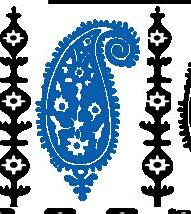
the little georgian collection
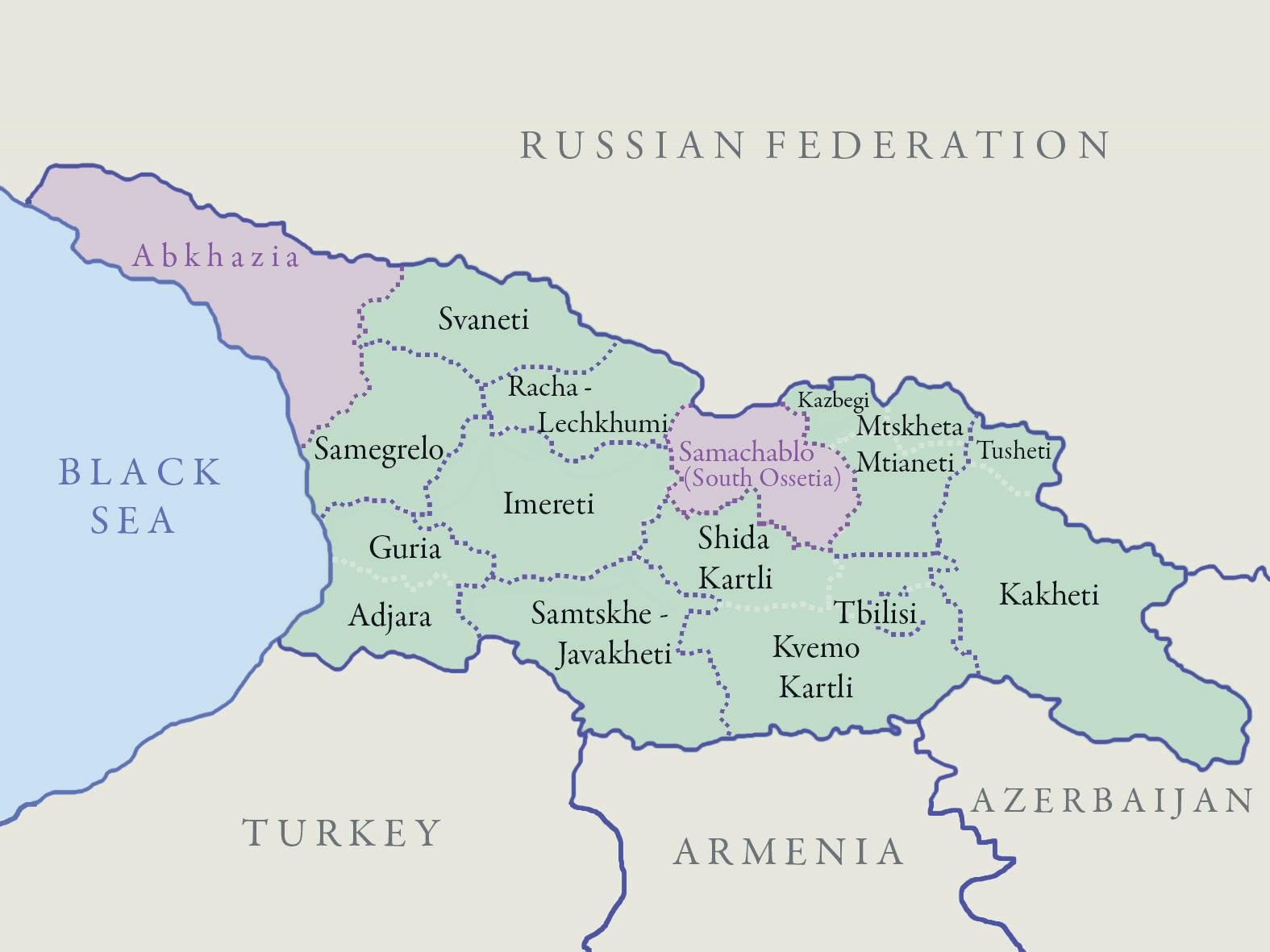
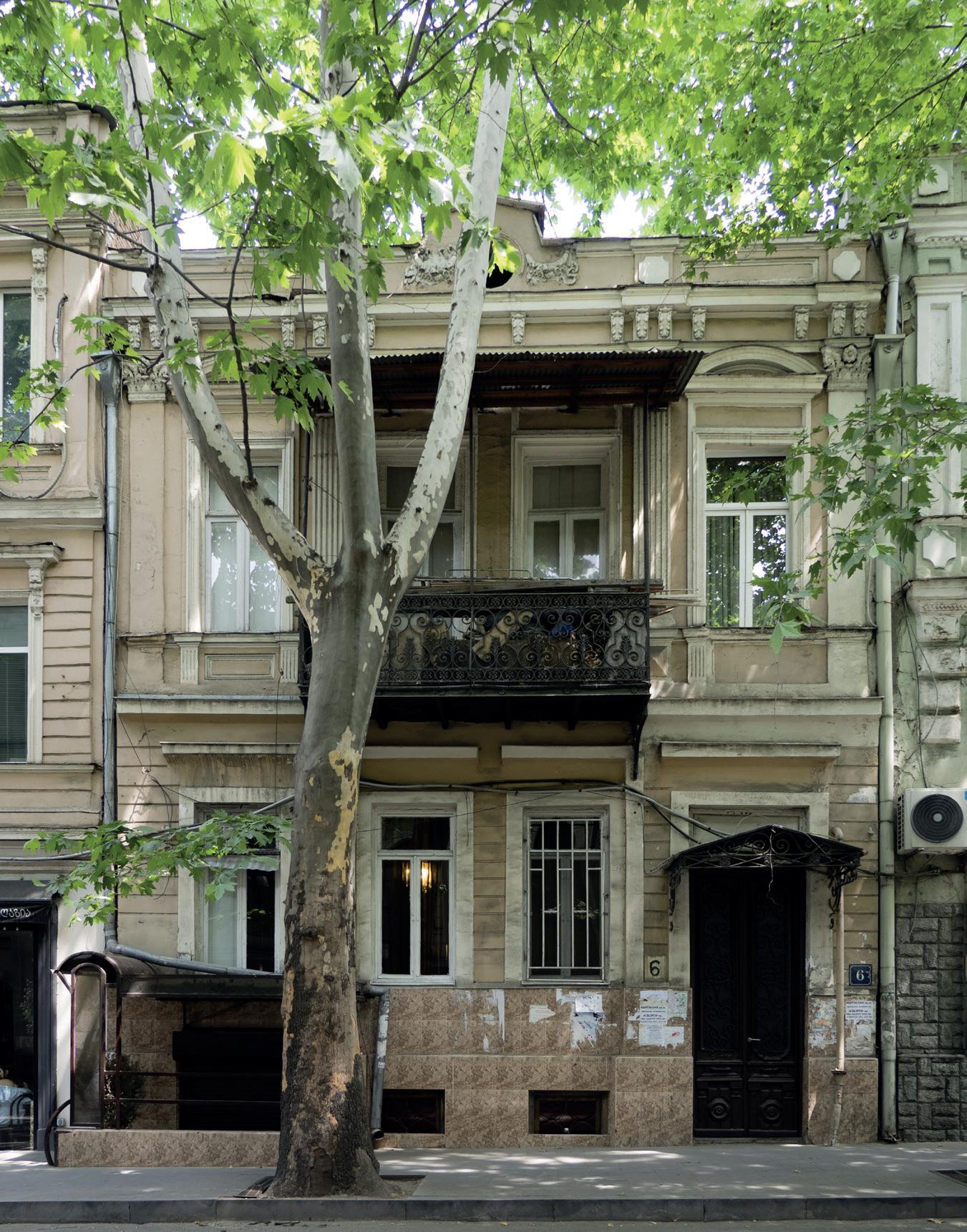
I published Tasting Georgia, A Food and Wine Journey in the Caucasus in 2017. It’s a large travel book covering the history of Georgian food and wine and includes 70 recipes. It focuses on the winemakers and cooks whose stories taught me about the regional diversity of the country’s gastronomy. Now I’ve decided to produce a collection of little books covering individual aspects of Georgian food and wine culture, of which this is the first.
Khachapuri – the cheese-filled bread – is a staple of Georgian cuisine and one of its iconic dishes. Other breads are filled with beans, meats and vegetables. They vary by region and season and make a good starting place for those wanting to cook Georgian food at home. They’re not hard to make once you get the hang of the easy technique. Whether you serve them as part of a complex feast or just eat them on their own, these breads are deliciously Georgian. This book includes the most traditional versions – from khachapuri to lobiani and kubdari – but I encourage you to be creative with the fillings, adding your favourite ingredients to make them more personal. This book is dedicated to Judy MacDonald.
Opposite: Tbilisi old town
Georgia’s history is unusually complex. This small country – it’s about the size of Scotland or a quarter of Italy – has been fought over for millennia. Its natural beauty and strategic position between the Caucasus Mountains and the Black Sea, at the crossroads between Asia and Europe, have long made it desirable.
Central Georgia’s almost Mediterranean climate allows for many crops that can’t easily be grown further north or south, including the grapes that feature in the country’s delicious wines.
Georgia claims a blood line to Noah via his son Thargamos’ great-grandson, Karthlos. The Georgians’ name for their own country, Sakartvelo, derives from this. In ancient times the area was divided between the kingdoms of western Colchis (Kolkheti) and eastern Iberia. Georgia was first unified in the 9th century by King Bagrat III, and enjoyed a ‘Golden Age’ under King David the Builder and his granddaughter, Queen Tamar, two of its most iconic rulers. Medieval Georgia was again divided into rival kingdoms and principalities even as it battled Ottoman and Persian invaders.
Georgia was annexed by the Russian Empire in 1801 after seeking its help to defend against Ottoman and Persian attack. After a large-scale peasant revolt in 1905, the Marxist Social Democratic Party became
the dominant political movement in Georgia. Joseph Stalin (Jugashvili), a Georgian Bolshevik, became a revolutionary leader there and went on to control the Soviet Union, with tragic consequences.
Georgia was briefly independent as a Democratic Republic between 1918-21 before the Red Army forcibly incorporated it into the Transcaucasian Socialist Federative Soviet Republic in 1922. In 1936 Georgia became the Georgian Soviet Socialist Republic until the dissolution of the Soviet Union. From 1972 to 1985 Eduard Shevardnadze held the post of First Secretary. Initially he fought corruption and helped reinstate the constitutional status of the Georgian language.
Georgia has been independent since 1991, when Zviad Gamsakhurdia was elected first President of Georgia. By 1992 Shevardnadze was again at the helm but became embroiled in separatist unrest that culminated in two regions – Abkhazia and South Ossetia (the Georgians prefer to call it Samachablo) – declaring autonomy from Georgia with Russia’s backing. This effectively means that two large regions inside the country are off-limits for the Georgians, offering Russia a valuable foothold there.
In 2003 the bloodless ‘Rose’ Revolution forced Shevardnadze to resign. In 2004 Mikheil Saakashvili formed a new government and prevented the loss of a third region, Adjara, but the conflict with Abkhazia
georgian khachapuri and filled breads
and South Ossetia led to the 2008 Russo-Georgian War. Saakashvili was voted out in 2012 and replaced by Giorgi Margvelashvili in 2013, when Bidzina Ivanishvili’s Georgian Dream coalition took power.
Today Georgia is doing its best to remain an independent democracy. A tolerant Orthodox Christian country, it is the most pro-European nation in the region. Georgia is currently increasing its positive international profile, with food and wine tourism playing an important part in that process.
Opposite: Khertvisi fortress, Samtskhe-Javakheti
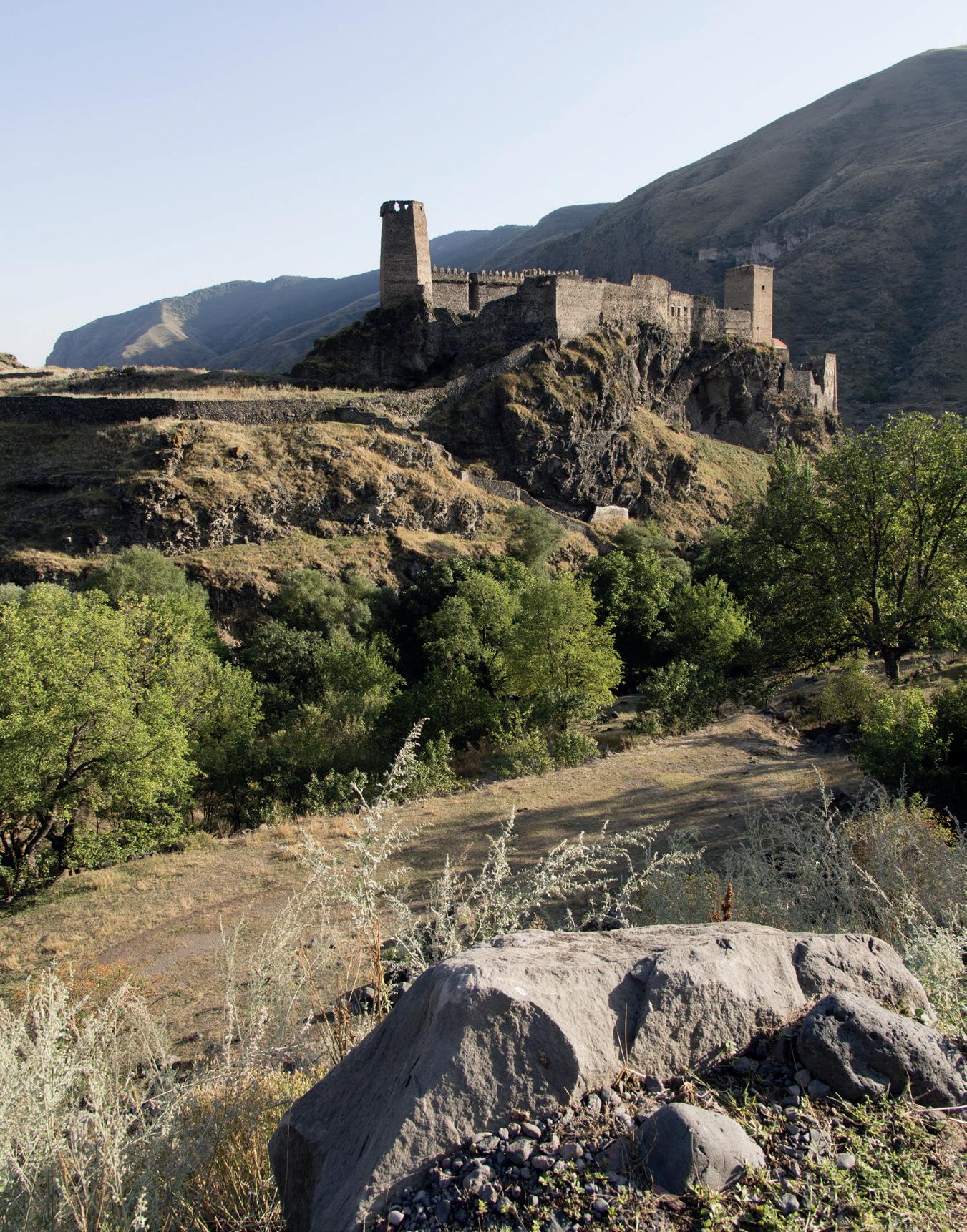
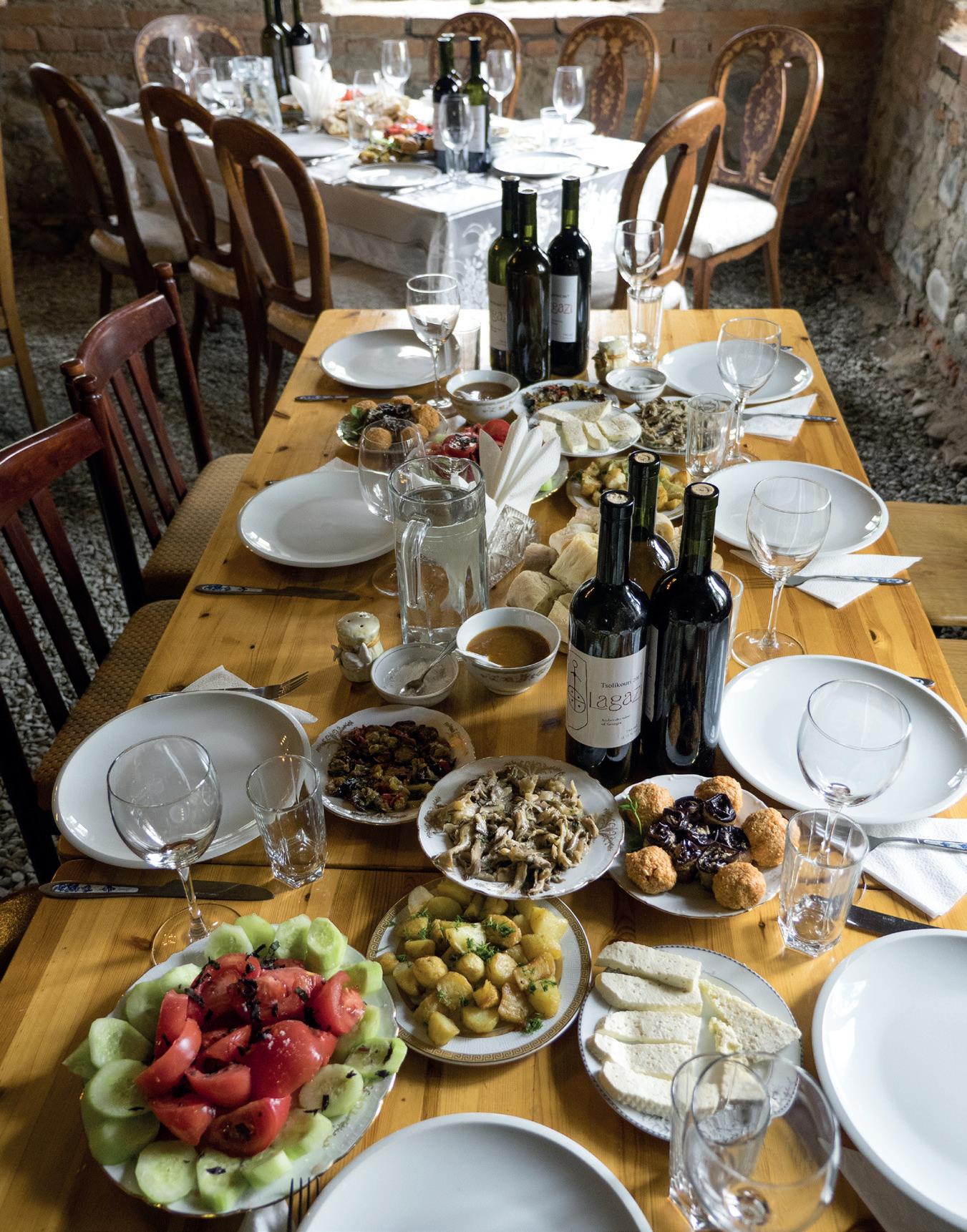
The Georgians are wonderfully hospitable, especially when they’re hosting family and guests at the table. The supra, or feast, holds legendary status. That’s where the passion for food, wine, music and good conversation come together. In Georgia the table is never empty. When you sit down for a meal, dishes already filled with a variety of colourful foods are arranged along the table from which the diners serve themselves. As the meal progresses hot dishes arrive in waves to complement them. So an initial assortment of vegetable dishes and condiments may be joined by beans, stewed and grilled meats, dumplings and filled breads.
The Georgian way of eating – many dishes to share with friends – feels modern but has ancient roots. The art of combining foods with exciting taste combinations – from sour to sweet, spicy to aromatic – has developed over centuries as the country’s occupiers added their culinary riches to Georgia’s. An abundant use of fresh vegetables, nuts and herbs makes the cuisine even more vibrant. If the full supra of at least 10 dishes seems too much for one cook to produce, try making a lighter version of 4 or 5, with at least one kind of filled bread.
Opposite: Supra table, Lagazi Wine Cellar, Kakheti
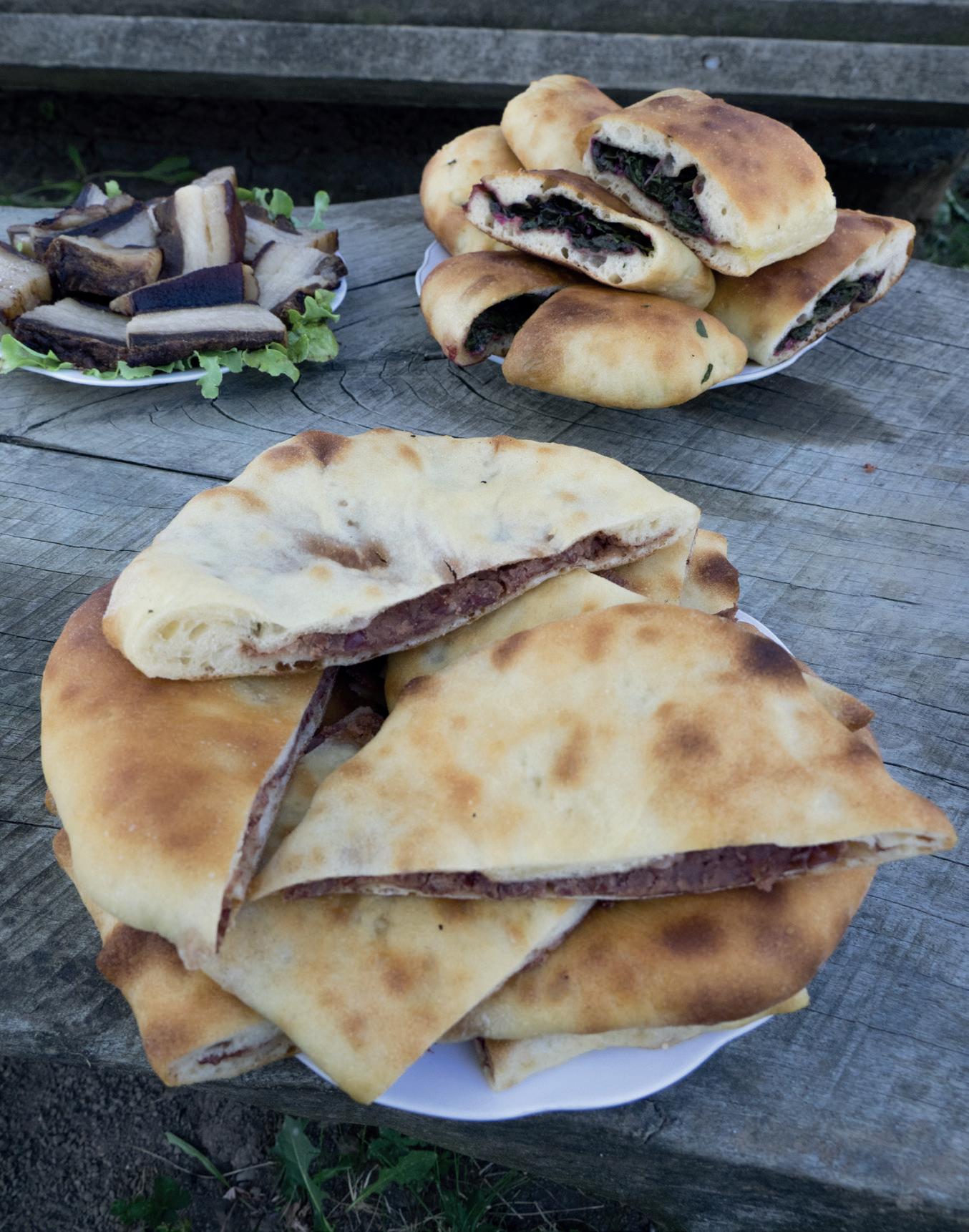

The ultimate comfort food, no Georgian meal would be complete without at least one kind of filled bread. They appear during a supra to accompany the other hot dishes but are also great as snacks or lighter meals by themselves. You can take them on picnics or reheat them for breakfast.
Khachapuri – the bread filled and sometimes also topped with cheese – is the most popular and best known. It has at least five distinct regional styles and countless variations.
Many others exist. Filled breads vary by region and by the preferences of individual families and their cooks. They can be made round or square, big or small. In this book you’ll find the most delicious, with fillings ranging from beans and greens to spiced meat.
Differences may depend on the type of dough being used (yeast or other leavening agents), the cooking method (oven-baked or stove-top), the shape, filling or season… the list is endless. But in each the principle of a bread dough with a filling is the same. Once you’ve mastered the technique, create your own!
(You’ll find a complete list of the recipes in this book on p. 5)
Opposite: Lobiani (front) and mkhlovani, Racha-Lechkhumi
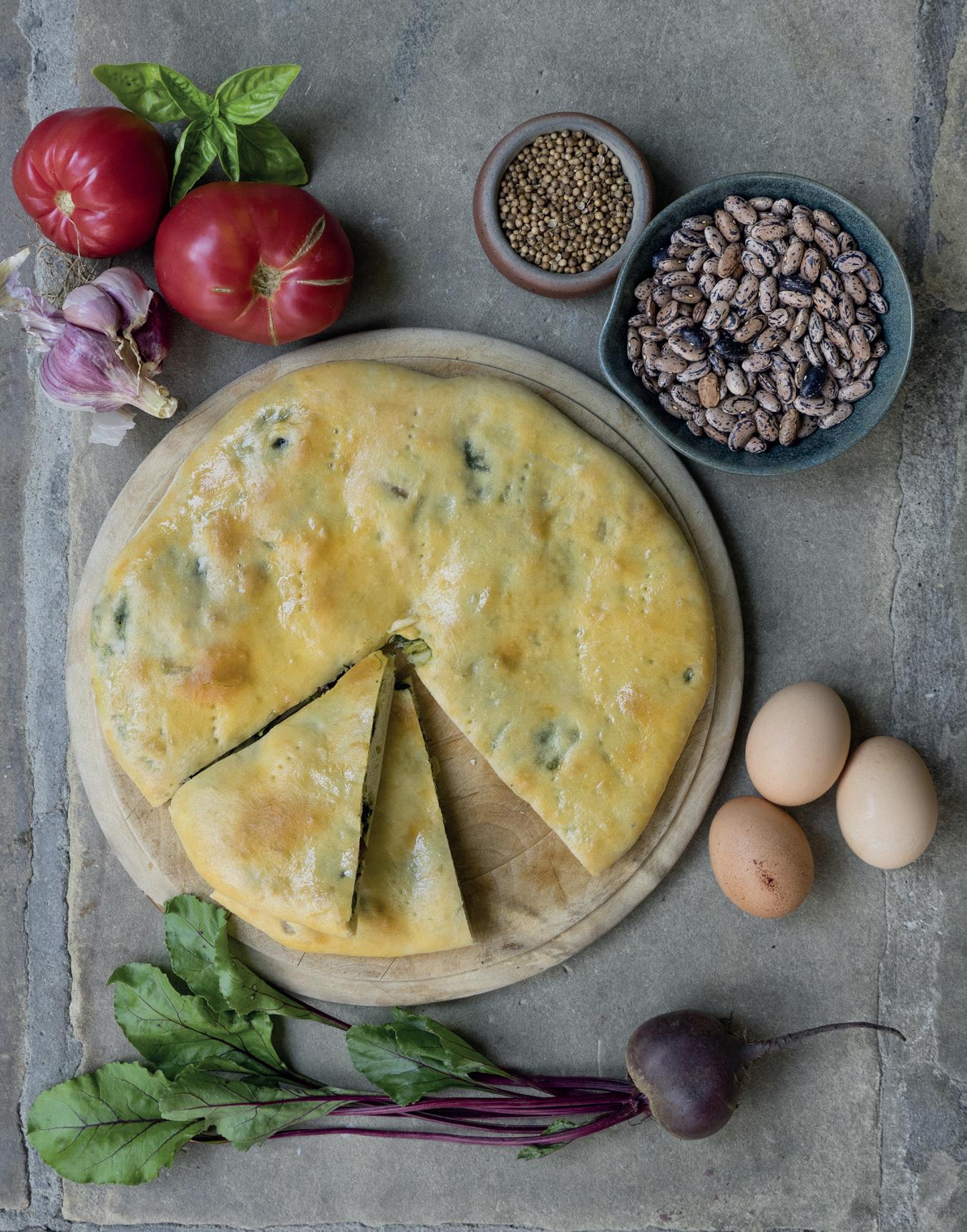
These recipes have been written for people who may never have tasted Georgian food and for those who already love it. So I’ve given measured ingredient suggestions throughout. This isn’t really the way Georgians who are familiar with these recipes cook. They rely on experience, adding a sprinkling of spices or handful of herbs where they know they’ll work.
I collected the recipes from families throughout Georgia and tested them using British and American ingredients. The results are somewhat different from the originals as basic ingredients – including flour and cheese – vary from place to place. Stick to high-quality ingredients and your dishes will always taste delicious.
Measurements are given in metric, imperial and US systems, including the US cup (240 ml / 8 fl oz) but I always weigh my dry ingredients: scales are more accurate than the cup system.
The spoons are UK/US standard:
1 tablespoon (tbsp) = approximately 15 millilitres (ml)
1 teaspoon (tsp) = approximately 5 ml
I usually portion each bread into 8 pieces, but you can cut them smaller to go with aperitifs or larger for main meals.

meskhuri khachapuri mesxuri xaWapuri
The buttery, layered dough of Meskhetian, or penovani khachapuri speaks of the influence of the Ottoman empire in southern Georgia. Local women make the dough by skilfully stretching it as thin and wide as strudel.
You can achieve a similar result much more easily by using all-butter puff pastry. It produces an elegant pie that is delicious straight from the oven when the cheese is oozing hot and the pastry is crisp. Use a mixture of your favourite cheeses, as in the Master Recipe, p. 26. This kind of pastry also works well with the other fillings in this book for quick tasty breads.
serves 4-6 preparation 10 minutes cook 30 minutes
1 roll ready-made all-butter puff pastry, chilled
75 g / 21/2 oz/ 2/3 cup grated or crumbled cheeses
80 g / 3 oz / 3/4 cup grated pizza mozzarella
1 egg yolk
Preheat the oven to 220 °C/425 °F/Gas Mark 7. Place a heavy flat baking tray in the centre of the oven while the oven is preheating.
Unroll the dough and cut it into a square about 22 cm/9 in on each side. Let it sit at room temperature on a lightly floured board while you prepare the cheese. (Refrigerate the remaining dough and use it for something else).
Combine the cheeses, including the mozzarella, in a mixing bowl.
Spread the cheese in an even layer onto the dough square. Pick up two opposing corners of the dough and bring them into the centre, pinching them together to hold. Repeat with the remaining corners. The parcel will look like a closed envelope with slighly higher outer edges. Pinch the seams together so it doesn’t come apart during baking. Turn the bread over onto a sheet of baking paper.
Paint the top with the beaten egg yolk. Slide the bread onto the preheated baking tray and bake for 25-30 minutes, or until the top is a deep golden brown. Cut into pieces and serve hot or warm.
Opposite: Cows grazing beneath the Caucasus Mountains, Kakheti
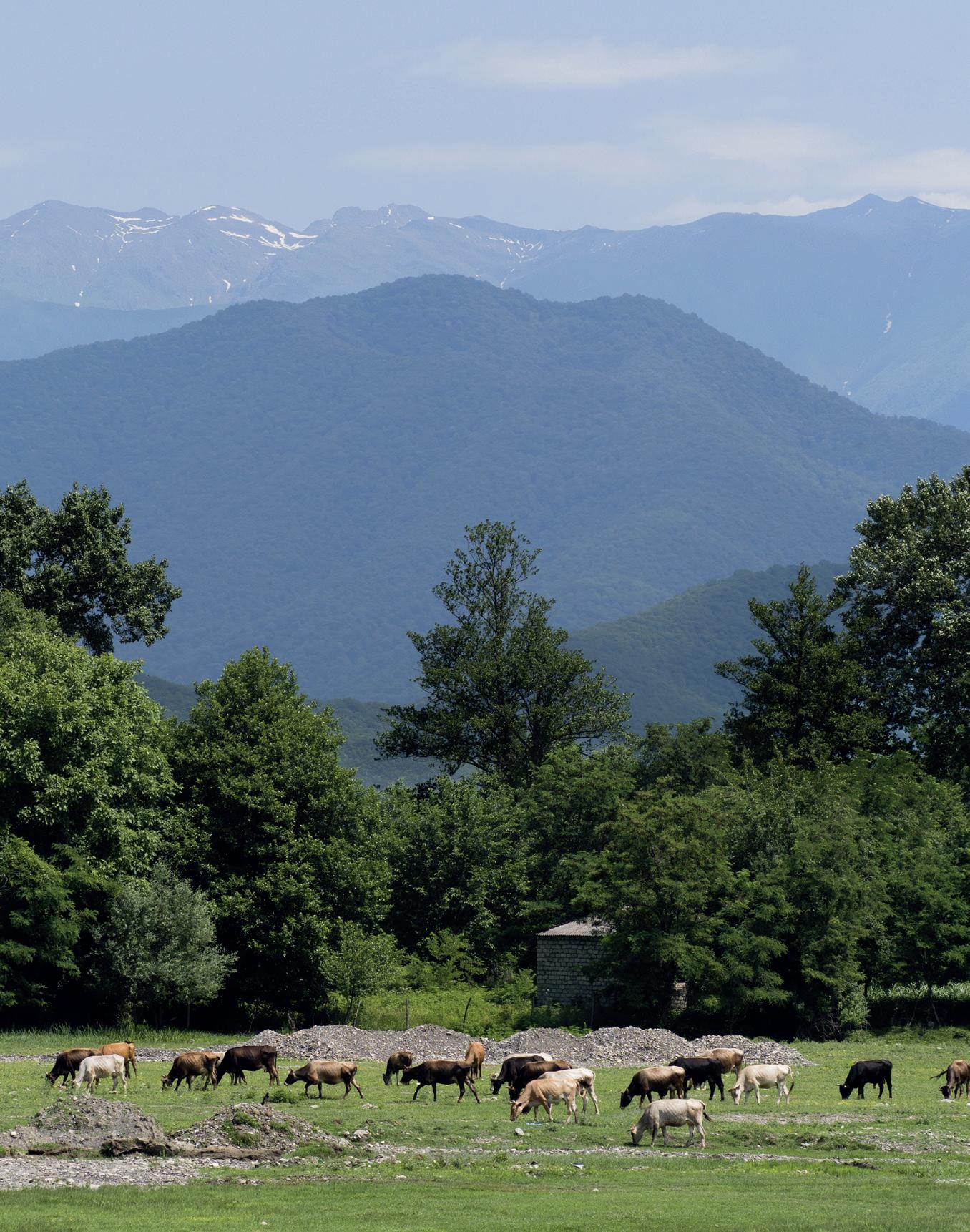

Abkhazia 9
Adjara 9; khachapuri of 36-37
ajika 61
baking soda, in dough 30-31
beans, in lobiani 56-59; vegetarian 58-59
beet-greens 52-55
Black Sea 8, 36
bread, cheese-filled see khachapuri
bread, filled 7, 13; about 15; cheeses for 19; dough for 22-26, 30-31; how formed in Georgia 20-23; how formed my way 27-28; Master Recipe (yogurt)
30-31; Master Recipe (yeast) 24-26; skillet method 28-29; what to eat with 60-61
bread, greens-filled see mkhlovani
bread, meat-filled see kubdari
Caucasus Mountains 8, 42, 47, 48
chard 52-55
cheese 7; Georgian, about 19; mix for khachapuri 26; sulguni 19
Christmas, khachapuri
38-41, 61
Colchis 8
dough for breads 22-23; how to make 25-26; yeast 24 egg, in Adjarian khachapuri 36-37; in Gurian khachapuri
38-41
foraged greens 52-55
Gamsakhurdia, Zviad 9
Georgia, climate of 8; feasting of 12-13; Golden Age of 8; history of 8-11; independence of 9; map of 4; royal family of 8, size of 8; Soviet 9
Georgian Dream 10
Georgian food, about 13, 17
greens 7; foraged 52-55; in mkhlovani 52-55
Guria 38-41
ham 56-58
Iberia 8
Imereti 22; khachapuri of 22-23
Ivanishvili, Bidzina 10
Kakheti 12, 18, 32-33, 47
Kazbegi 42
khabizgina 42-43
khachapuri, about 7, 15; Adjarian 36-37; cheeses for 19; Christmas 38-41; filling recipe 26; forming 20-23, 27-28; Gurian 38-41;
khachapuri continued
Imeretian 22-23, 26, 35;
Master Recipes for 24-26, 30-31; Megrelian 1, 2, 19, 34-35, 60; Meskhetian (penovani) 44-46; potatofilled (khabizgina) 42-43; with spinach (pkhlovani) 55; what to eat with 60-61
Khertvisi 11
kubdari 7, 15, 48-51, 61
Lagazi Wine Cellar 12
lobiani 7, 14, 56-59
Margvelashvili, Giorgi 10
market: Bodbiskhevi 18; Kutaisi 57; Tbilisi 54
measurements used in this book 17
meat 7, 60-61; in kubdari
48-51; in lobiani 56-58
Meskheti
(Samtskhe-Javakheti) 45
mkhlovani 14, 52-55
Noah 8
Nosiri restaurant 34
Oni 59
Orthodox Christian 10
Ossetia, South 9, 10, 42
Ottoman Empire 8; influence of 45 pkhlovani 55
potato filling 42-43
Racha-Lechkhumi 14, 56-59
recipes, about 17; Master (yeast) 24-26, Master (yogurt) 30-31
Saakashvili, Mikheil 9
Sakartvelo, origins of 8
salad, cucumber and tomato
39, 60-61
Samachablo 9
Samegrelo 19; khachapuri of 1, 2, 34-35, 60
Samtskhe-Javakheti 11
Shevardnadze, Eduard 9
skillet method 21, 28-29
South Ossetia 9, 10, 42
Soviet Georgia 9
spices, in kubdari 48-50; in lobiani 58-59
spinach 52-55
Stalin, Joseph 9
supra 7, 15, 32-33, 48, 60-61; about 12-13
Svaneti 48-51
Tamar, Queen, 8
Tasting Georgia 7
Tbilisi 6, 54
Ushguli 51
vegetables 13, 60-61; in mkhlovani 52-55
wine 10, 12, 13, 61
yeast, in dough 22; Master Recipe 24-26
yogurt (matsoni), in dough 22, 53; Master Recipe 30-31